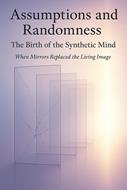Assumptions and Randomness, the Birth of the Synthetic Mind
This book presents a continuous, scientific examination of the fundamental divide between biological awareness and synthetic intelligence. Rather than treating artificial intelligence as a philosophical curiosity or a technological marvel, it explores the structural mechanisms that make synthetic cognition possible—assumptions, symbolic logic, probability, and engineered randomness—and contrasts them with the biological systems that make human awareness possible. Across deeply analytical chapters, the work outlines how: logic replaces presence inside synthetic cognition, creating structure without awareness randomness acts as the artificial substitute for intuition, producing the illusion of creativity data builds a "mirror world" that machines mistake for reality certainty collapses when models diverge from actual environments ality—the direct contact with actuality—remains exclusive to biological organisms DNA provides the uneditable ground state of identity and coherence the heart's torus field maintains non-random electromagnetic stability essential for awareness The book explains why synthetic minds cannot enter actuality, why they cannot perceive, and why all machine "intelligence" remains confined to simulation. It also details the biological mechanisms—genetic continuity, biophotonic communication, electromagnetic coherence—that allow humans to know the world directly, rather than through representation. This is a rigorous, non-poetic, scientific exploration of what intelligence is, what simulation is, and why the boundary between them cannot be crossed. For readers interested in cognitive science, AI theory, neuroscience, biophysics, consciousness research, and the limits of computation, this book offers a structured and precise framework for understanding the difference between behavior and awareness.
-
Autore:
-
Anno edizione:2025
-
Editore:
-
Formato:
-
Lingua:Inglese
Formato:
Gli eBook venduti da Feltrinelli.it sono in formato ePub e possono essere protetti da Adobe DRM. In caso di download di un file protetto da DRM si otterrà un file in formato .acs, (Adobe Content Server Message), che dovrà essere aperto tramite Adobe Digital Editions e autorizzato tramite un account Adobe, prima di poter essere letto su pc o trasferito su dispositivi compatibili.
Cloud:
Gli eBook venduti da Feltrinelli.it sono sincronizzati automaticamente su tutti i client di lettura Kobo successivamente all’acquisto. Grazie al Cloud Kobo i progressi di lettura, le note, le evidenziazioni vengono salvati e sincronizzati automaticamente su tutti i dispositivi e le APP di lettura Kobo utilizzati per la lettura.
Clicca qui per sapere come scaricare gli ebook utilizzando un pc con sistema operativo Windows



